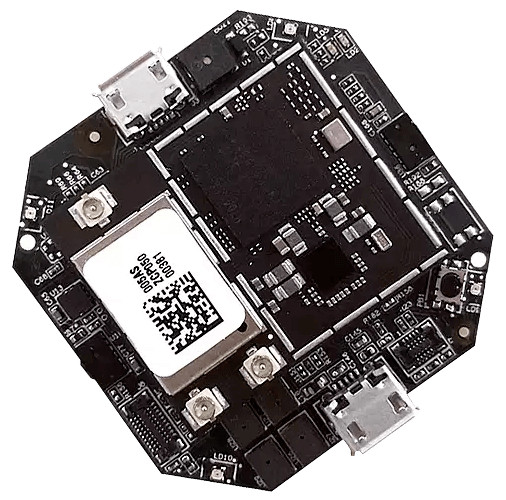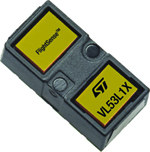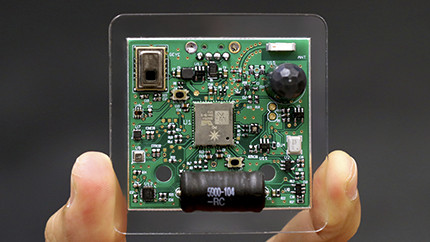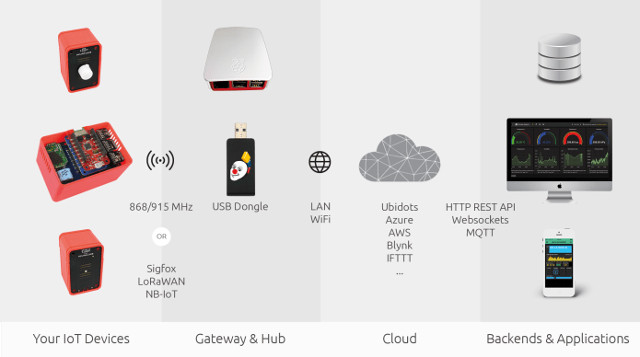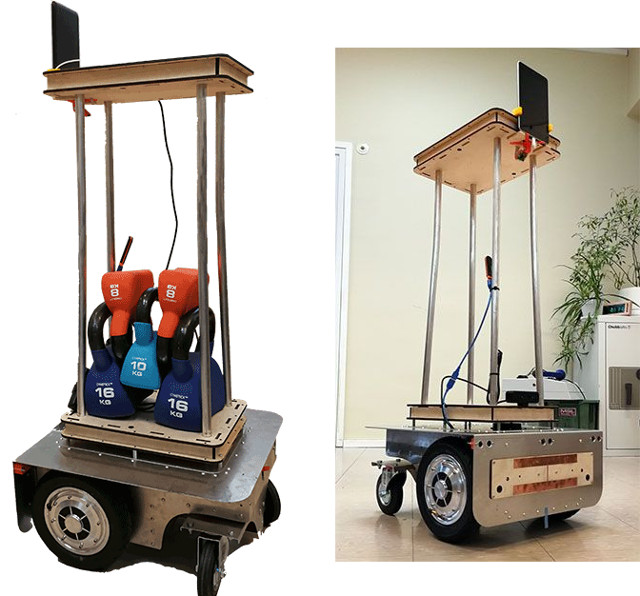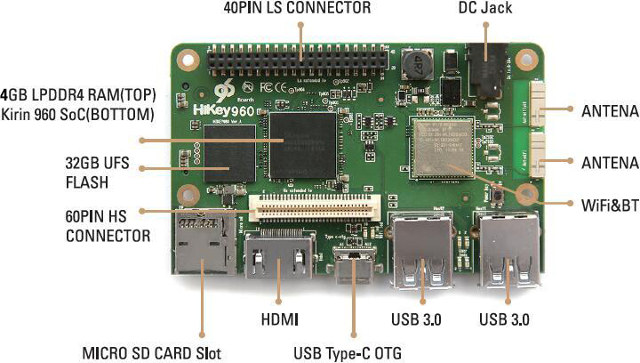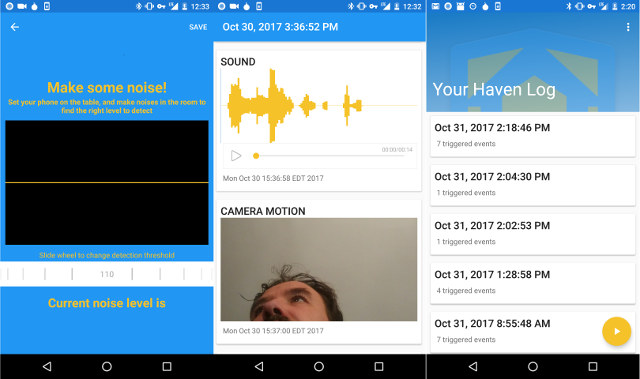Samsung first announced their Artik IoT modules almost three years ago, and until recently most Artik related products or development kits came from Samsung themselves, with no third party involved. But this has started to change recently with announcements such a Seeed Studio Eagleye 530s low cost development board based on Artik 530 module, and Resin.io Project Fin combining RPI CM3L module with an Artik 020 module for low power Bluetooth connectivity. But as I flicked through Resin.io supported hardware, I discovered they also supported Linux powered Artik 520 and Artik1020 module, as well as some new “KITRA” boards I had never heard of, and if we visit RushUp company website, we can see they have a bunch of Kutra boards and one IoT gateway based on Artik modules: KITRA 520 – Samsung ARTIK 520 product accelerator for advanced IoT KITRA 710 – Samsung ARTIK 710 product accelerator for advanced multimedia […]
STMicro VL53L1X Time of Flight (ToF) Sensor Extends Distance Measurement Range up to 4 Meters
STMicroElectronics VL53L0X ToF (Time-of-flight) range sensor is a tiny chip that can accurately and quickly measure distance up to 2 meters using laser light. I had the chance to test the sensor via TinyLIDAR board connected Arduino and Raspberry Pi, and found it was a great little sensor. TinyLIDAR includes an STM32 MCU, but you can also find standalone board for as low as about $4 shipped on Aliexpress. However, if 2 meters is too short a range for your project, the good news is that STMicro has now launched VL53L1X ToF “FlightSense” sensor with a range of up to 4 meters. VL53L1X is pin-to-pin compatible with VL53L0X, so existing PCBs could be re-used with the new sensor. STMicro VL53L1X main specifications: Emitter: 940 nm invisible laser (Class1) SPAD (single photon avalanche diode) receiving array with integrated lens Low-power microcontroller running advanced digital firmware Distance Ranging up to 4 meters […]
Synthetic Sensors Combine Multiple Sensors and Machine Learning for General-Purpose Sensing
Sensors can be used to get specific data for example temperature & humidity or light intensity, or you can combine an array of sensors and leverage sensor fusion to combines data from the sensors to improve accuracy of measurement or detect more complex situation. Gierad Laput, Ph.D. student at Carnegie Mellon University, went a little further with what he (and the others he worked with) call Synthetic Sensors. Their USB powered hardware board includes several sensors, whose data can then be used after training through machine learning algorithms to detect specific events in a room, car, workshop, etc… List of sensors in the above board (at frequency at which data is gathered): PANASONIC GridEye AMG8833 IR thermal camera (10 Hz) TCS34725 color to digital converter (10 Hz) MAG3110F magnetometer (10 Hz) BME280 temperature & humidity sensor, barometer (10 Hz) MPU6500 accelerometer (4 kHz) RSSI data out of 2.4 GHz WiFi […]
Evercell Thermal Energy Harvester to Power Battery-less IoT Wireless Sensors
In order to be successful the Internet of Things needs to be extremely inexpensive per node, and the problem is that most remote sensors are non powered by batteries, which either needs to be replaced or recharged, which involve maintenance costs. One ideal solution is battery-less IoT sensor nodes, that do not need any battery, and instead rely on energy harvesting. The idea is easier said that done, especially if you intend to do it cheaply. While there have been solutions provided over the years for example using vibration energy harvesting or water flow, battery-less devices are still not that common, but companies still bring new energy harvesting devices to market. One of those is Face International’s Evercell thermal energy harvester that leverages the temperature difference within a material to generate electricity, as long as ambient temperature is above absolute zero. The company plans to manufacture various models of their […]
BigClown is a Battery Powered Modular Wireless IoT Kit for Makers (Crowdfunding)
BigClown IoT Kit is designed to be as easy to use as building a castle from LEGO bricks or an IKEA cabinet. The open source kit is comprised of a coreboard module with STMicro STM32L0 Cortex M0+ micro-controller, and a sub GHZ (868/915MHz) radio for wireless communication, that accepts one or more compatible modules (currently ~30 different options), and communicate to a gateway such as Raspberry Pi or Turris Omnia where you’d connect BigClown RF USB dongle, although it’s also possible to include a Sigfox module for communication, and , LoRa & NB-IoT module appear to be planned. That’s for the hardware…The kit then connects to your chosen gateway via MQTT, which in turns accesses cloud services such as Ubidots, Microsoft Azure IoT, AWS, IFTTT, etc… , and you can monitor the data or control the kit through a web based dashboard or your own application. Core Module specifications: MCU […]
Pulurobot is a Low Cost Open Source Raspberry Pi based Load Carrying Autonomous Robot
Earlier today I wrote about FOSDEM 2018 schedule, and among the various talks I selected for my virtual schedule was “How to build an autonomous robot for less than 2K€”. Some excerpt from the abstract including a short description of the project, and its “open-sourceness”: PULUrobot solves the autonomous mobile robotics complexity issue without expensive parts, without compromise. By fearless integration and from-scratch design, our platform can do SLAM, avoid obstacles, feed itself, and carry payload over 100kg, for less than 2,000 EUR. Application ecosystem can be born around it, as we offer a ready-made Open Source (GPLv2) solution in a tightly coupled HW-SW codesign. So I decided to have a closer at this project, which can be used as a robot maid/helper of sort, and other applications. The robot was made by a brand new (July 2017) startup called Pulu Robotics Oy and based in Finland. They have three […]
HiKey 960 Android Development Board Gets a 4GB RAM Version for $250
Hikey 960 development board is one of the most powerful Arm boards on the market thanks to Huawei/Hisilicon Kirin 960 octa-core processor with four ARM Cortex A73 cores, four Cortex A53 cores, and a Mali-G71 MP8 GPU, fast storage with 32GB UFS 2.1 flash, and 3GB LPDDR3 memory. Like the earlier Hikey (620) board, the board is also an official reference board for AOSP, so you should be able to run the latest Android version, and also play with sensors using Neonkey SensorHub 96Boards mezzanine board. If you are somehow limited by the 3GB RAM on the board, you can rejoice as Seeed Studio has just launched a 4GB RAM version selling for $249, or about $10 extra. Note that shipping is only scheduled for February 2, 2018, so those are pre-orders. The rest of the specifications for Hikey 960 4GB RAM version are unchanged: SoC – Huawei Kirin 960 […]
Haven Open Source App Transforms Your Old Android Smartphone into a Smart Security Camera
About two years ago, I wrote a post asking what to do with old devices instead of throwing them away. My own proposals included giving them away, reselling them on eBay, recycling them for other purpose like servers or download clients, or scavenging some parts. Other people also comments what they did with theirs, for example setting up a Linux cluster with old TV boxes. Another way to recycling an old (Android) smartphone – albeit you could always buy an inexpensive one – is to install and run Haven, an open source app that transforms your phone into some sort of smart security camera, but instead of only using the camera from the phone, the app also logs audio events using its microphone (array), as well as data reported by sensors. One of you first reaction might be: “cool! somebody may an app that would allow hackers or government to […]


